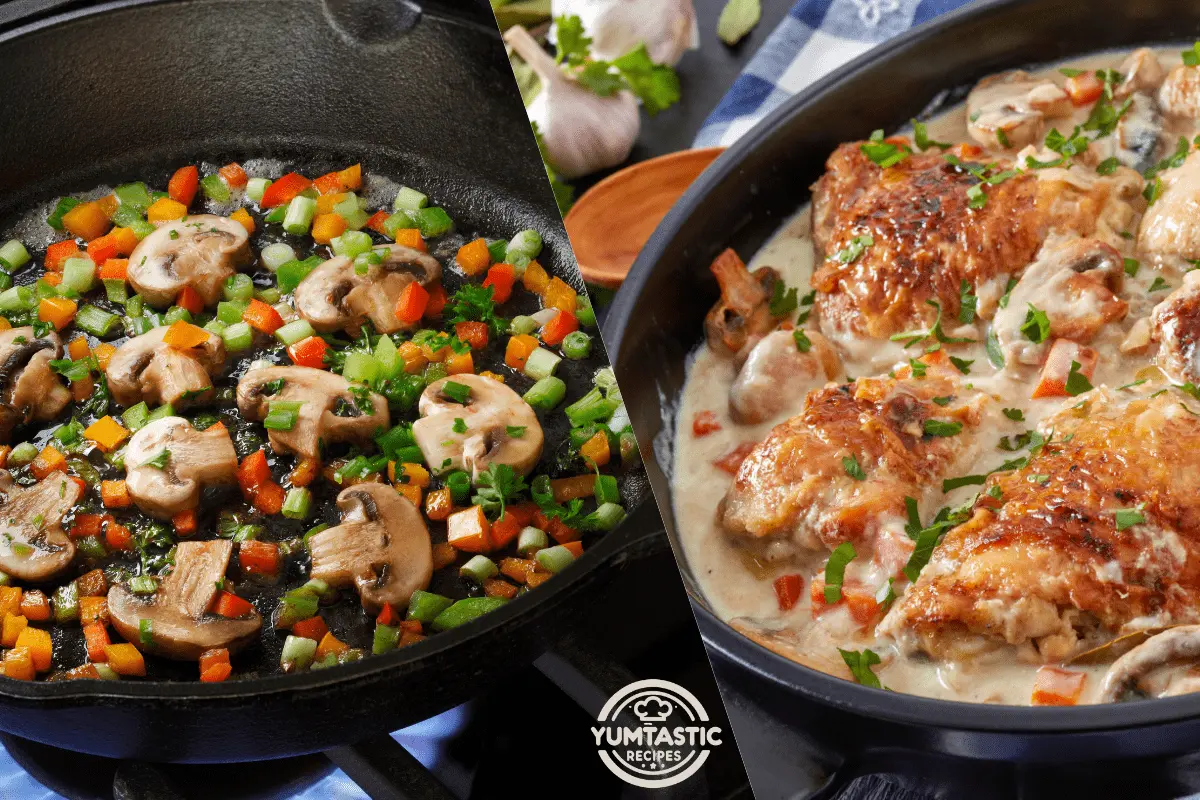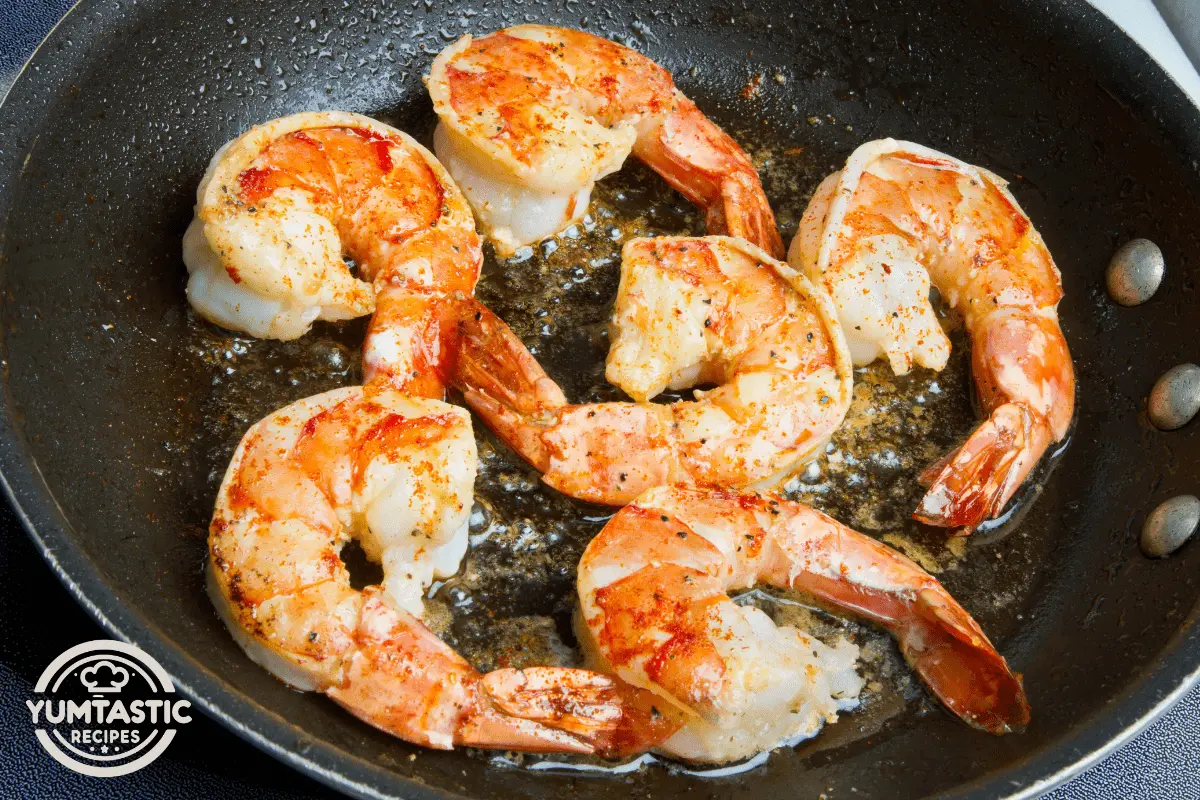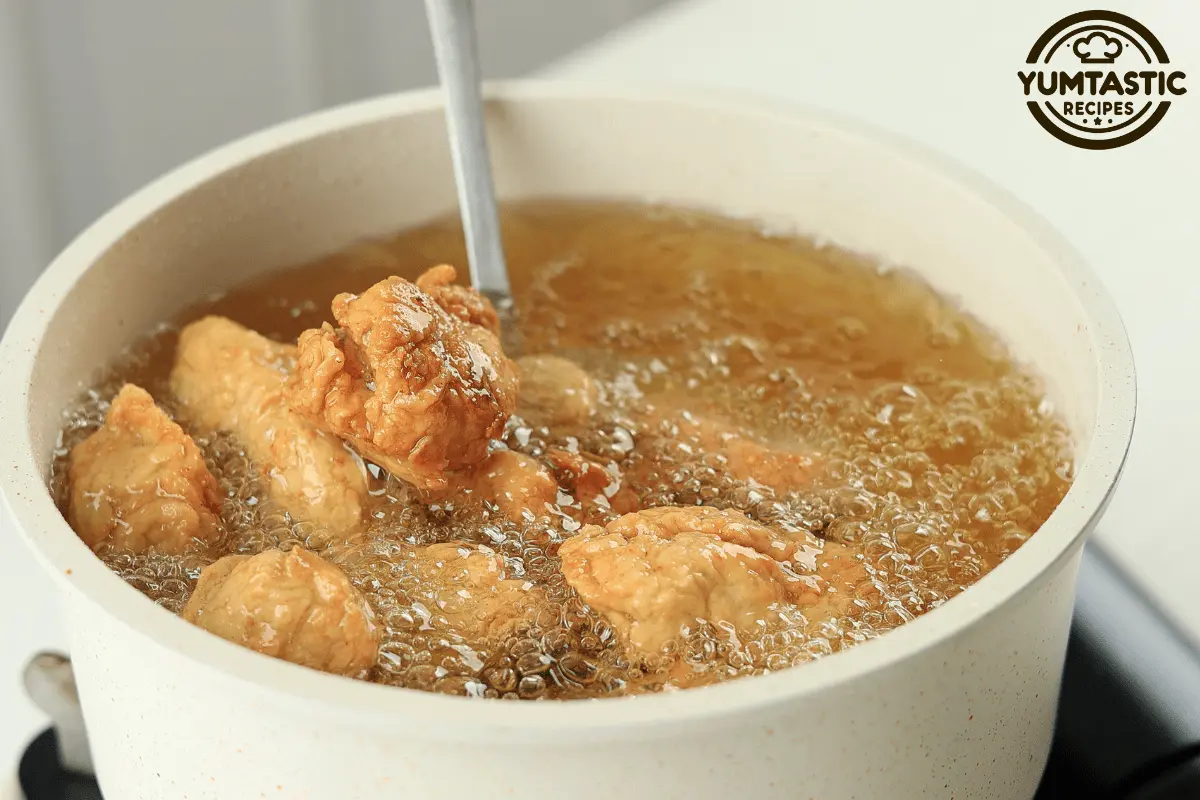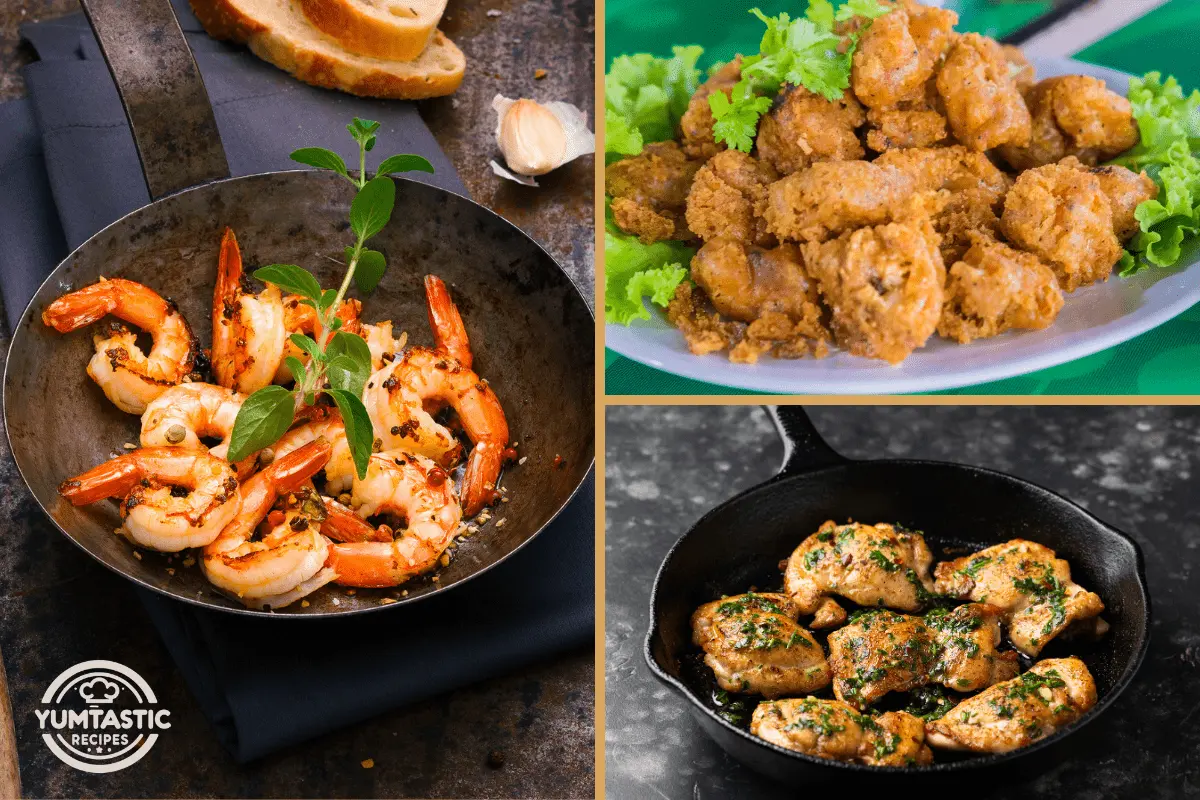In the culinary world, the question of “What is the Difference Between Saute and Fricassee?” often stirs up a mix of curiosity and confusion. This comprehensive guide delves into the art and science behind these two distinct cooking methods, unraveling their intricacies and unique flavors. From their historical roots to practical applications, this article serves as a culinary compass, guiding both novice and seasoned cooks through the nuances of sauté and fricassee.
Introduction to Cooking Techniques: Saute vs. Fricassee
Defining Saute and Fricassee
Sautéing, a term that dances off the tongue as elegantly as the technique itself, involves cooking ingredients rapidly in a small amount of fat. It’s a method that’s as much about skill as it is about speed. The word sauté comes from the French verb sauter, meaning to jump, which vividly describes how food leaps around in the hot pan.
On the other hand, fricassee speaks of a gentler, more patient approach. This traditional French technique combines sautéing and stewing, where the food, often chicken or veal, is first sautéed in butter without browning and then simmered in a broth, resulting in a creamy, velvety sauce. Unlike the quick jostle of sautéing, fricassee is about slow, loving coaxing of flavors.
Historical Context of Saute and Fricassee
The history of these techniques is as rich as the flavors they create. Sautéing, with its roots in the quick and efficient style of French cooking, became popular for its ability to preserve the texture and flavor of fresh ingredients. It’s a testament to the adage, “time is of the essence,” perfectly aligning with the fast-paced rhythm of modern life.
Fricassee, meanwhile, harks back to a time when cooking was a leisurely affair. Originating in the 17th century, French chefs favored this method for its ability to tenderize tougher cuts of meat and infuse them with the subtle complexities of herbs and spices. This technique reflects a culinary era where patience was an essential ingredient in every dish.
Understanding Saute
Basic Principles of Saute
Sautéing is akin to a culinary ballet. The basic principle is simple: heat a pan, add a thin layer of fat – be it oil or butter – and then cook the food at a high temperature. This method is all about quickness and lightness, ensuring that the ingredients retain their texture and color. It’s a dance of heat and timing, where you often toss or flip the food to ensure even cooking. The key is to keep everything moving; like a lively conversation, there’s no room for pause.
Common Ingredients and Dishes in Saute
When it comes to sautéing, almost anything goes. Vegetables become vibrant and crisp, meats develop a succulent sear, and seafood is tenderly cooked to perfection. Classic dishes like sautéed mushrooms, shrimp scampi, and chicken piccata all showcase the versatility of this technique. The beauty of sautéing lies in its adaptability – whether it’s a quick weeknight dinner or an elaborate meal, sautéing fits the bill.
Tips for Perfect Sauteing
To master the art of sautéing, a few tips can elevate your cooking:
Heat is Your Friend: Ensure your pan is properly heated before adding the ingredients. A hot pan is crucial for that perfect sear.
Avoid Overcrowding: Give your ingredients room to breathe. Overcrowding leads to steaming rather than sautéing, robbing them of their golden crispness.
Choose the Right Fat: Different fats have different smoke points. For high-heat sautéing, oils like canola or grapeseed are ideal, while butter adds a rich flavor for lower-heat dishes.
Keep It Moving: Use a spatula or give the pan a good shake. This movement is essential for even cooking and preventing sticking.
Exploring Fricassee
Fricassee Cooking Method Explained
Fricassee, a word that conjures images of rustic French kitchens and hearty meals, is a cooking method that marries the techniques of sautéing and stewing. The process begins with gently sautéing the main ingredient, typically chicken or veal, in butter without browning it. This step is crucial as it sets the stage for the dish’s characteristic light color and tender texture. After sautéing, you simmer the meat in a broth, often enriched with cream, to create a velvety and flavorful sauce. Fricassee orchestrates a symphony of subtlety, giving each ingredient a chance to shine.
Variations of Fricassee
While chicken fricassee remains a classic, this technique’s beauty lies in its versatility. From rabbit to lamb, and even seafood, the fricassee method can be adapted to a variety of proteins. Vegetarian versions, often featuring mushrooms or other hearty vegetables, are equally sumptuous. Each variation adheres to the fundamental steps of the method while allowing the cook to infuse personal flair and flavor.
Accompaniments for Fricassee Dishes
The perfect side dish to a fricassee can elevate the meal to new heights. Traditional accompaniments like buttered noodles, creamy mashed potatoes, or steamed rice work wonderfully, soaking up the rich sauce. For a lighter touch, a crisp green salad or steamed vegetables can balance the dish’s richness. The key is to choose sides that complement the fricassee’s creamy texture and deep flavors.
Comparative Analysis
Cooking Techniques Compared: Saute vs. Fricassee
At first glance, sauté and fricassee might seem like distant relatives in the culinary family, but a closer look reveals their unique characteristics. Sautéing is all about the quick, high-heat cooking that gives ingredients a crisp, flavorful exterior. It’s a technique that demands constant attention, a lively dance between chef and pan. Fricassee, in contrast, is a slower, more methodical process. It begins with a gentle sauté but then transitions into a slow simmer, allowing flavors to meld and deepen over time. This method produces dishes that are tender, rich, and infused with flavor.
Flavor and Texture Differences in Saute and Fricassee
The differences in cooking techniques naturally lead to variations in flavor and texture. Sautéed dishes are renowned for their crispness and well-defined flavors, with each ingredient making a distinct impression in the final dish. Conversely, fricassee, blending the techniques of sautéing and stewing, offers a more harmonious mix of flavors. This slow cooking process culminates in a texture that’s tender and succulent, accompanied by a sauce that’s both smooth and cohesive.
Choice of Ingredients and Preparation: Saute vs. Fricassee
Choosing between sauté and fricassee often comes down to the ingredients at hand and the desired outcome. Sautéing is ideal for tender cuts of meat, fresh vegetables, and seafood that cook quickly and benefit from a bit of browning. Fricassee is better suited for tougher cuts of meat that require longer cooking times to become tender. The preparation also differs; sautéing requires minimal prep, while fricassee involves more steps, from the initial sauté to the final simmer.
Practical Application: When to Saute or Fricassee
Decision Factors in Cooking: Saute vs. Fricassee
Several factors, such as time constraints, the type of ingredients at hand, and your desired flavor profile, can guide your choice between sautéing and fricasseeing. If time is tight and you have tender ingredients like thin chicken cutlets, shrimp, or fresh vegetables, opt for sautéing as your go-to method. It’s quick, efficient, and delivers a delightful crispness. On the other hand, if you’re working with tougher cuts of meat or seeking a dish with depth and richness, fricassee is the better choice. It requires more time and patience, but the result is a comforting, flavorful dish that’s worth the wait.
Recipe Suggestions for Saute and Fricassee
For those eager to try their hand at sautéing, consider simple yet delicious recipes like garlic shrimp, sautéed green beans with almonds, or a classic chicken stir-fry. These dishes allow the primary ingredients to shine, enhanced by the high heat and quick cooking of the sauté method.
Fricassee enthusiasts might start with a traditional chicken fricassee, rich with a creamy sauce, or venture into a rabbit or mushroom fricassee for a more adventurous culinary experience. These recipes embrace the slow simmer of the fricassee technique, resulting in tender, flavorful dishes that are perfect for a leisurely dinner.
Frequently Asked Questions
Common Queries About Saute and Fricassee
In this section, we address some of the most common questions about sauté and fricassee, offering clarity and additional tips for these popular cooking methods.
Can I use the same pan for both sautéing and fricasseeing?
Absolutely! A heavy-bottomed skillet or a Dutch oven works well for both techniques. The key is to choose a pan that distributes heat evenly.
How do I prevent my sauté from becoming a stir-fry?
The distinction lies in the heat and movement. Sautéing requires higher heat and less frequent stirring compared to stir-frying, which is done over intense heat with constant stirring.
What’s the best way to thicken the sauce in a fricassee?
Traditionally, a roux (a mixture of flour and fat) is used. However, you can also use cornstarch mixed with a little cold water to create a slurry, which is then stirred into the simmering liquid.
Can I sauté with olive oil?
Yes, but it’s best to use light or refined olive oil, which has a higher smoke point than extra-virgin olive oil. This makes it more suitable for the high heat of sautéing.
Is fricassee only for chicken?
Not at all! While chicken is traditional, fricassee can be made with a variety of meats, including rabbit, lamb, and even seafood. Vegetarian versions are equally delicious.
How do I know when my sauté is done?
The ingredients should be evenly browned and cooked through, but still tender. It’s important not to overcook, as this can lead to dryness, especially with lean meats.
Expert Answers and Tips
For Sautéing: Remember to pat your ingredients dry before adding them to the pan. This helps achieve a better sear and prevents steaming.
For Fricassee: Don’t rush the initial sauté step. Cooking the meat gently without browning is key to developing the dish’s unique flavor and texture.
Concluding Thoughts on Saute and Fricassee
Summary of Key Points
As we’ve explored, sauté and fricassee are both esteemed pillars in the world of cooking, each with its unique charm and techniques. Sautéing, characterized by its quick, high-heat cooking, brings out the vibrant flavors and textures of ingredients, making it ideal for a fast-paced kitchen. Fricassee, on the other hand, stands as a testament to the art of slow cooking, where you lovingly simmer ingredients to create a harmonious blend of flavors in a rich, creamy sauce.
Encouragement to Experiment with Both Techniques
The true joy of cooking lies in experimentation and the willingness to try new techniques. Whether you’re a seasoned chef or a home cook, the adventure of sautéing and fricasseeing offers a rewarding culinary experience. Embrace the quick and lively rhythm of sauté for a weekday dinner or indulge in the slow, comforting process of fricassee for a weekend feast. Each method will not only enhance your cooking repertoire but also bring a new appreciation for the ingredients and the meals you create.
In the end, cooking is more than just a method; it’s an expression of creativity and love. So, grab your pan, light the stove, and let the magic of sauté and fricassee unfold in your kitchen.



